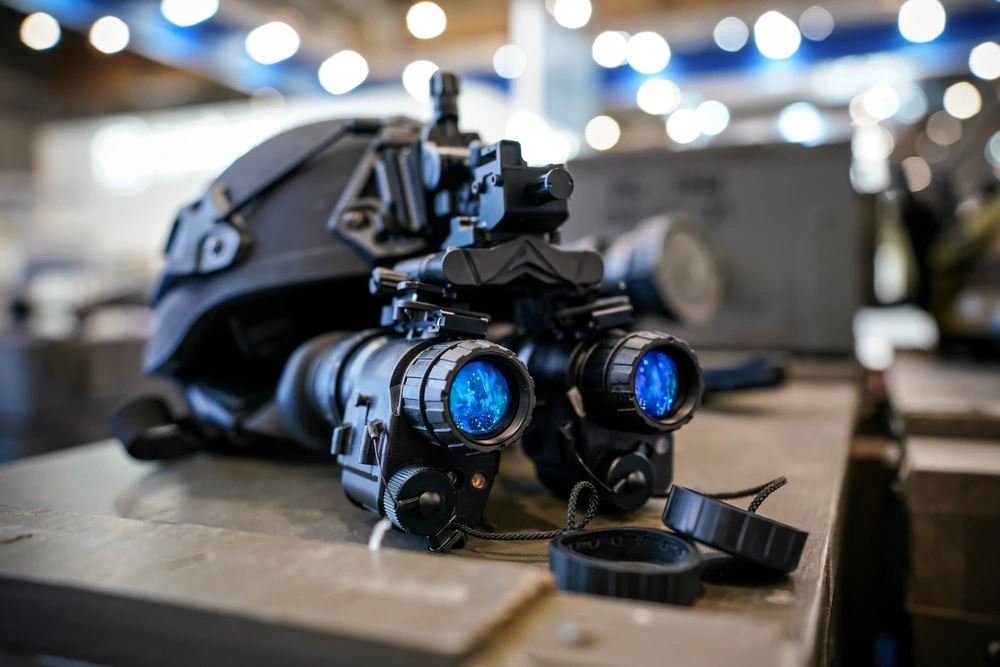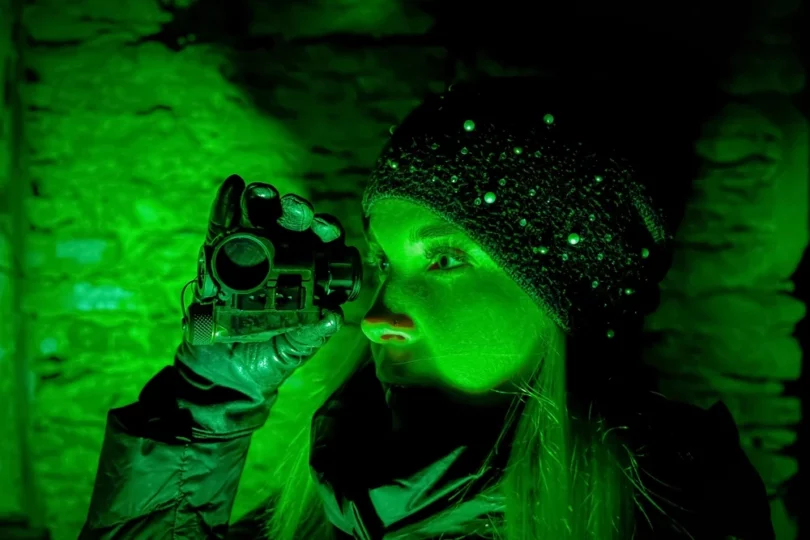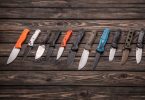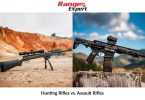Night vision technology has long captured our imaginations because we always longed for a glimpse into the unseen world that unfolds under the cloak of darkness. But the high price tag of different night vision devices makes them out of reach for many people worldwide.
The question arises, “Why is night vision so expensive?” Well, it’s not just about seeing in the dark. There’s a whole lot of fancy technology packed into those tiny tubes, and that technology comes at a cost.
Why Is Night Vision So Expensive?
High-Tech Hardware
Imagine a camera that doesn’t need light to see. That’s essentially what night vision does.
It uses special tubes called image intensifiers, which convert existing light (even moonlight) into an image you can see.
These tubes are complex and require specialized materials, which means they are expensive to make.
The thermal imaging technology is even more expensive. Thermal imaging is like taking pictures with heat. Instead of capturing how things look, it shows how hot or cold they are.
A special camera, called a thermal camera, sees the heat that objects give off. Warmer areas appear as bright colors, like red or yellow, while cooler spots look darker, like blue or purple.
Limited Demand
Unlike smartphones, night vision goggles aren’t exactly everyday items. Their primary users are the military, law enforcement, and night hunters, which means there’s a small market for them. This limited demand keeps the prices high.
Research and Development
Those fancy image intensifiers didn’t appear out of thin air. Scientists spent years researching and developing the technology and that comes with a high price tag. Companies factor in their R&D costs into the final product price.
Government Regulations
In some countries, civilians can’t just buy night vision goggles off the shelf. Strict regulations and licensing requirements limit the market even further, contributing to the high prices.
Quality Matters
Night vision goggles are used in critical situations where failure is not an option.
This means they have to be built to be last and must use top quality materials and assembly processes. These high standards come at a premium.
The future of night vision
While night vision goggles are still expensive, they are becoming more affordable as technology advances. With larger markets and more competition, prices could eventually come down.
Seeing the Future with New Generations of Goggles

In case you didn’t know, the night vision technology comes in four generations, with the more expensive models being the latest.
Let’s examine what it means if night vision goggles are categorized as first, second, third, or fourth generation.
- Gen 1: The first generation, offering basic image intensification and limited resolution
- Gen 2: Improved resolution and sensitivity compared to Gen 1
- Gen 3: Utilizes gallium arsenide for significantly brighter and sharper images
- Gen 4: The latest generation that boasts even higher resolution, sensitivity, and signal-to-noise ratio
Emerging Technologies:
Several exciting advancements are pushing the boundaries of night vision technology, such as:
-
Digital Night Vision
It replaces traditional image intensifier tubes with digital sensors so they can be integrated with other technologies like thermal imaging.
-
Panoramic Night Vision Goggles
They offer a wider field of view to help enhance situational awareness.
-
Foveated Night Vision Goggles
They focus the image on the center of the user’s vision to provide sharper detail while maintaining peripheral awareness.
-
Thermal Imaging
It detects heat signatures so users can see in complete darkness or through smoke and fog.
Benefits and Applications:
These new advancements offer several benefits:
- Improved performance: Higher resolution, sensitivity, and wider fields of view.
- Enhanced situational awareness: Better peripheral vision and ability to see through obstacles.
- Greater versatility: Integration with other technologies and thermal imaging capabilities.
These advancements have a wide range of applications:
- Military: Enhanced night-time operations, target acquisition, and surveillance.
- Law enforcement: Improved patrol and search capabilities, apprehension of suspects.
- Civilian: Search and rescue operations, wildlife observation, recreational activities.
Image Intensification vs Thermal Imaging
Night vision devices are now a must for military personnel, law enforcement, and even civilians who require clear vision in low-light conditions.
However, there are two main types of night vision technology available:
- Image Intensification
- Thermal Imaging
Each type offers unique advantages and disadvantages, and the best choice ultimately depends on the specific needs and environment of the user.
1. Image Intensification
How it works
Image intensifiers use a tube containing a photocathode that converts ambient light, including moonlight, starlight, or even infrared light emitted by objects, into electrons.
These electrons are then amplified and projected onto a phosphor screen, creating a visible image
Advantages
- More affordable H4 Generally cheaper than thermal imaging goggles.
- Better resolution H4 Provides sharper and more detailed images, especially in conditions with some ambient light.
- Lightweight and compact H4 Easier to wear and carry for extended periods.
Disadvantages
- Limited performance in complete darkness: Requires some level of ambient light to function.
- Susceptible to bright light: Can be damaged by exposure to bright light sources.
- Does not detect heat: Cannot see objects through smoke, fog, or other obscurants.
2. Thermal Imaging
How it works
Thermal imaging goggles detect the heat signatures emitted by all objects, regardless of the presence of light.
This is accomplished using a sensor that measures the infrared radiation emitted by objects, which is then converted into a visible image.
Advantages
- Works in complete darkness: No ambient light required.
- Sees through obscurants: Can see through smoke, fog, and other obstacles that would block visible light.
- Detects heat sources: Can reveal the presence of people and objects even if they are hidden from view.
Disadvantages
- More expensive: Typically cost more than image intensification goggles.
- Lower resolution: Images may be less detailed than those obtained with image intensification.
- Bulkier and heavier: Can be more cumbersome to wear and carry.
How to Choose the Right Type of Night Vision Goggles?
The best type of night vision goggles for you depends on your specific needs and budget. Consider the following factors when making your decision:
- Lighting conditions: If you are operating primarily in low-light conditions with some ambient light, image intensification may be sufficient. However, if you need to see in complete darkness or through obscurants, thermal imaging is the better choice.
- Budget: Image intensification goggles are typically more affordable than thermal imaging goggles.
- Weight and size: If you need to wear the goggles for extended periods, consider the weight and size of each type.
- Functionality: Consider any additional features that may be important to you, such as digital zoom, GPS integration, or image recording capabilities.
Whether you choose image intensification or thermal imaging, night vision goggles can provide you with a significant advantage in low-light conditions.
Remember, the best way to determine which type of night vision goggles is right for you is to try them out and see which one you prefer.
Conclusion
Why is night vision so expensive? As you can see, the high cost of night vision devices can be put down to the complex technology involved, specialized manufacturing processes, and substantial R&D investments.
While the price may put some people off, the benefits and capabilities of night vision technology make it a valuable tool for those who need enhanced vision in low-light conditions.
FAQs
Q. Are there any less expensive alternatives to expensive night vision devices?
Ans. While traditional night vision devices can be expensive, there are less expensive options available.
Thermal imaging cameras, which detect heat signatures, and digital night vision devices, which use digital sensors to capture and enhance low-light images, are two alternatives.
Q. Can I purchase used night vision devices to save money?
Ans. Buying used night vision equipment can be a cost-effective option. It is critical, however, to ensure that the device is in good working order and has not been heavily used or damaged.
Q. Will the price of night vision devices come down in the future?
Ans. Technological advancements and increased competition may result in a decrease in the cost of night vision devices over time. However, predicting when and how much the prices will fall is difficult.








Leave a Comment